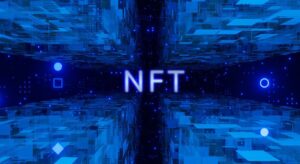
Investing in Non-Fungible Tokens (NFTs) has become a significant trend in the financial markets. As a new form of digital asset that cannot be replicated, NFTs present unique opportunities for growth and diversification. But like all investments, they also come with risks. This article explores NFTs as an investment asset, examining the potential rewards, inherent risks, and strategies for navigating this dynamic field.
NFTs as an Investment Asset
Opportunities
NFTs have rapidly gained attention due to their distinctive nature and potential for growth. They represent ownership of a unique digital item, such as art, music, or collectibles, and have proven to be a lucrative investment for some. Key opportunities include:
- Diversification: NFTs allow investors to diversify their portfolio with a new asset class.
- Potential for Growth: The NFT market has shown substantial growth in recent years and offers exciting prospects for further expansion.
- Exclusive Ownership: NFTs provide ownership of a one-of-a-kind digital asset, offering an unparalleled experience.
Risks
Despite the promise, NFT investments carry substantial risks that must be understood and managed:
- Market Volatility: The NFT market is highly volatile, with prices subject to wild fluctuations.
- Lack of Regulation: As a relatively new field, NFTs are not yet well-regulated, increasing the risk of fraud and other malpractices.
- Technological Risks: Being a digital asset, NFTs are susceptible to technological failures, such as hacking or data loss.
- Long-term Value Uncertainty: The long-term value of NFTs remains uncertain and depends on various factors like demand, utility, and cultural significance.
Strategies for NFT Investment
To mitigate risks and maximize rewards, investors should adopt carefully planned strategies:
- Research and Education: Understand the underlying technology, market dynamics, and specific NFTs you are interested in investing in.
- Diversification: Don’t put all your eggs in one basket; diversify your NFT investments to spread risk.
- Risk Assessment: Evaluate the risk profile of your investment and ensure it aligns with your financial goals and risk tolerance.
- Use Reputable Platforms: Engage with well-known and respected platforms to minimize the risk of fraud.
- Monitor Trends: Stay up-to-date with the latest trends, news, and regulations affecting the NFT market.

The Societal Impact of NFTs
Cultural Recognition
As NFTs become more mainstream, they offer a unique platform for artists, creators, and influencers from all walks of life. This democratization allows:
- Underrepresented Voices to Shine: NFTs give a platform for artists and creators who might not have had exposure in traditional spaces.
- Preservation of Digital Heritage: Unique moments in internet history or digital art can be preserved and valued as NFTs.
- Collaborative Creations: Collaborative NFTs can merge talents from different sectors, creating cross-industry partnerships.
Potential Concerns
However, with this rise in popularity, there are societal concerns:
- Environmental Impact: NFTs and their underlying blockchain technologies consume a significant amount of energy, raising ecological concerns.
- Over-commercialization: As NFTs become more popular, there’s a fear that the essence of art and creation could become overly commercialized.
Practical Uses of NFTs Beyond Art
Utility in Various Sectors
While art and collectibles dominate the NFT conversation, their utility stretches beyond:
- Gaming: NFTs represent in-game assets, enhancing user experience by allowing for genuine ownership of virtual items.
- Real Estate: Virtual real estate transactions using NFTs can represent ownership in digital spaces.
- Identity Verification: NFTs can serve as a digital passport or certificate, confirming one’s identity or achievement.
Navigating Practical Uses
Investing in these sectors requires:
- Understanding the Sector: Each use-case has its ecosystem, norms, and risks.
- Technological Adaptability: The practical use of NFTs is often tied to specific technologies or platforms.
- Monitoring Evolution: These sectors are rapidly changing, with new applications for NFTs emerging regularly.
Conclusion
Investing in NFTs offers unique opportunities for growth and diversification but also carries significant risks. Through careful analysis, understanding of the market, and strategic planning, investors can explore this new asset class while being mindful of its potential pitfalls. As with any investment, due diligence, wise decision-making, and a keen understanding of one’s risk tolerance are essential in navigating the complex and exciting world of NFTs. The burgeoning NFT market is sure to continue evolving, providing both challenges and opportunities for those willing to engage with it intelligently.







